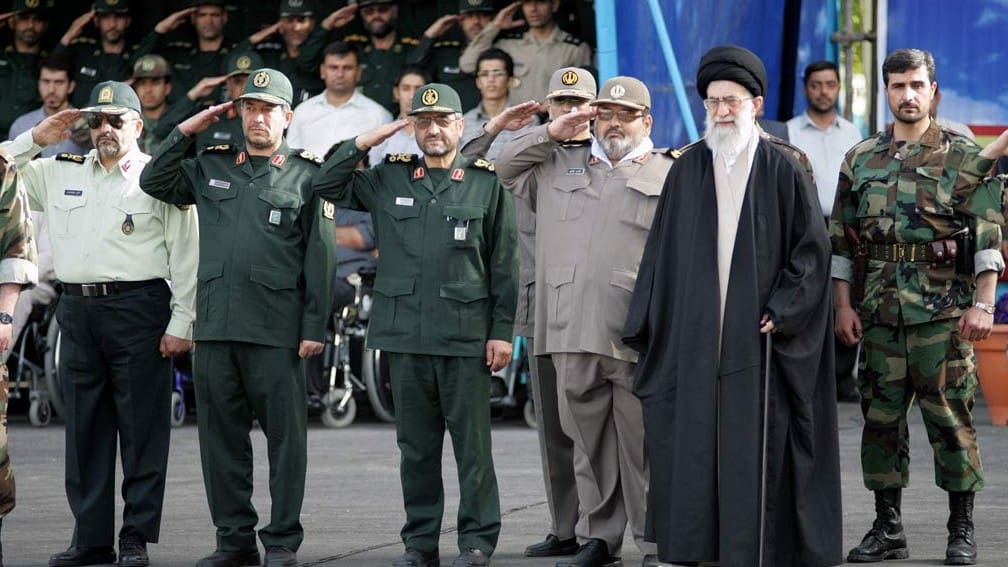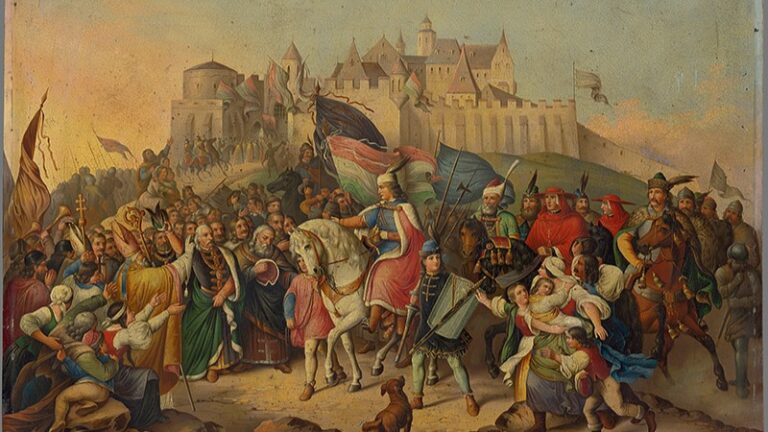The Islamic Republic of Iran, outside the Vatican City State, is the world’s only clerically-ruled government. In fact, in the entire fourteen-hundred-year history, never has a Muslim state been ruled by a cleric before Ayatollah Ali Khamenei. Ever since the 1979 revolution that ousted Shah Mohammad Pahlavi, Shi’ite Islam in Iran has not just been the religion of state, it has also formed the framework for a theocracy that demands total obedience to the body politic. Indeed, Iranians Shi’ites, distinct from their Sunni brethren, see themselves as the only and exclusive heirs of the Islamic traditions from their Prophet Muhammad. Sunnis compose about 85 per cent of the Muslim population while Shi’ites are about 10 per cent.
Both affirm that Muhammad was Allah’s last messenger, and both accept the authenticity of the Quran. And while they too give credence to the hadiths—the traditions of the prophet of Islam—each group possesses its own distinct canonical collection. With regard to the sharia, the Shi’ites possess the same law as the Sunnis, with the exception of some minor ritual aspects.
Historical Development
The division, based on the political succession of the Prophet—since he died without leaving a male heir or naming a successor—originated in retrospect in 661, at the death of Muhammad Ali (son-in-law and cousin of the Prophet, and according to the Sunnis, his fourth legitimate successor). He was elected caliph with the backing of those who assassinated his predecessor, the Caliph Uthman, in 656. Ali’s election raised suspicion in the eyes of Uthman’s backer and cousin, Mu’awihya I (founder and second caliph of the future Umayyad dynasty), who was governor in Syria. As a consequence of Mu’awihya’s drive to avenge his relative, the young Islamic community saw its first division when the Syrian governor, who also controlled Mecca and Medina, declared war against Ali in 657. This led to the first Islamic sect: the Khawarij (Outsiders); one of its members, Ibn Muljam, killed Ali as he was praying in the Great Mosque in Kufa, Iraq.
Scholars generally concur that the cause of the schism resulted when Ali’s first son, Hasayn Ibn Ali (third imam, according to the Shi’ites), yielded his office of the caliphate to Mu’awihya but did not consent succession to his first son, Yazid I. At the Battle of Karbala in 680, Yazid beheaded Hasayn, and the leadership of the Islamic nation passed onto the Umayyad dynasty (661–750), since it remained uncontested. Ruling from Damascus, groups such as the aforementioned Khawarij did not follow.[1] Consequently,
the assassination of the Prophet’s grandson, Hasayn, became the watershed event in the transformation of the disciples of the imams from a political party to the full-blown sectarian movement we today know as Shi’ism.[2]
Unlike the Sunnis, who hold that the head of the Islamic body politic is to be chosen by the umma (community), specifically its elders, Shi’ite Muslims claim that succession is based on the family line of the Prophet, as taught by Ja’far al-Sadiq (712–765), the sixth Shi’ite imam in the line of Muhammad Ali. Since they argue that Ali was the Prophet’s true successor, his three predecessors (recognized by Sunnis as the Rightly Guided Caliphs), Abu Bakr, Umar,and Uthman, were usurpers.
Shi’ism, as a branch of Islam, evolved through a Gnostic approach to God (i.e., having an intimate knowledge and spirituality with Allah and acknowledging a hierarchy of angels). Shi’ites, who are seen as heretical by Sunnis, believe that we have free will, are responsible for our own actions, and are called to conduct ourselves according to the design of Allah’s justice, which is revealed through a series of signs, the most important being prophecy and the guidance of the imams. Following their teachings and imitating their conduct leads one into harmony with the divine; this must be pursued within a rational search of their profound and religious message. In this way, we would be able to observe divine justice, which moves us to act properly; divine justice and social justice in this manner become complimentary.[3]
One of its first organized and structured sects arose in the late seventh century under the Kaysanites. As followers of Abu Ishaq al-Mukhtar (622–687), they too sustained the legitimacy of the imamate of Muhammad Ali and his kindred successors. However, it was not until the reign of the Sunni Abbasid dynasty (750–1258), with its center of government in Baghdad, that the formal schism took place. This primarily came as a result when Ja’far’s political endeavors were discontinued after his failed anti-Abbasid Revolt of 762, which sought to restore a legitimate imam. What then developed was an introverted and quietist religious trend. In essence, the Shi’ite imams ceased to be anti-caliphs and devoted themselves to the spiritual leadership of their community; they altogether renounced any remaining political aspirations and dedicated themselves to local community affairs and leading pious personal lives.[4]
In 874, after the death of the eleventh imam, Hasan al-Askari, the Ja’far line came to an end. With no direct heirs to the throne, in order to maintain their socioreligious structure, Shi’ite jurists developed the concept of a twelfth imam (Muhammad al-Mehdi), who went into retreat but would return as the anointed one in the end-times. In lieu of a living imam, the Banu Nawbakht Shi’ite family assumed the leadership of the community from 874–941. This period was called the Lesser Occultation, in which the new leadership acted as agents with the hidden al-Mehdi; it was followed by the Greater Occultation (941–up to the end-times), when direct contact with al-Mehdi was claimed. Deprived of direct divine guidance, Baghdad Shi’ites began to codify their religious and cultural heritage to counterbalance for the missing imam.[5] Most Shi’ite jurists, who are recognized as Mehdi’s agents and sole legitimate interpreters of the sharia, claim that all governments are illegitimate until the promised Mehdi returns to establish everlasting peace and justice on earth. Based on the historical events, one can say that the Islamic split was political but driven by religious or spiritual motives.
Religiosity
The term imam generally used in Arabic vocabulary means ‘leader’; in Sunni political theory, it signifies the caliph himself. In Shi’ism, it refers to the person who is embodied with the Muhammadan Light (al-nur al-muhammadi), which was handed down through Fatima, Muhammad’s daughter, and Muhammad Ali, the first imam. Consequently,
imams, from Ali to the Twelfth Imam Mehdi, are considered to be sinless (ma’sum) and to possess perfect knowledge of Allah’s esoteric and exoteric orders.
Their representatives, as with Ayatollah Khamenei, are likewise to possess the same virtue.
By designation, the imam acquired knowledge and exclusive authority to elucidate the Quran and the hadiths, thereby outlining a legal system for his followers. The historical succession after Ja’far further consolidated the preexisting messianic tendencies toward a belief in the supernatural attributes of the imam. By the mid-eleventh century, Imami Shi’ites had formed a mundane life and began to live in perpetual anticipation of the world to come. As a result of its permanent opposition to the established political regimes, Imamism had become a denomination of redemption. Whether it is by emotional absorption into their martyrdom or by having a Gnostic vision and mystical identification with the divine being, salvation could be obtained if one lived in accordance with the hadiths of the Prophet and of the imams.
In the absence of the Mehdi, Twelver Shiites—distinct from the Alawite Shi’ites in Syria—believe that clerics trained in seminaries can substitute for his authority on some issues. So clerics in Shi’ism are powerful in interpreting Allah’s word for their followers. And the faithful are obliged to give blind obedience to clerics’ religious rulings, as with Iran’s first Supreme Leader Ayatollah Ruhollah Khomeini and now with his successor Ayatollah Khameini and his appointed imams.
Considering these precedents one can perhaps better understand how and why, unlike the rest of the Muslim world, the Iranian body politic holds such influence over the daily affairs of its citizens, at least for the time being.
[1] Giovanni Sale, Isis Islam e cristiani d’Oriente. Milan, Jaca Book, 2016, 89–90.
[2] Zackery M. Heern, The Emergence of Modern Shi’ism: Islamic Reform in Iraq and Iran. London, Oneworld Publications, 2015, 2.
[3] Sale, 95–96.
[4] Ira M. Lapidus, A History of Islamic Societies, 3rd ed.. New York, Cambridge University Press, 2014), 139.
[5] Ibid, 141–142.







